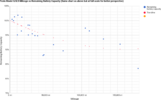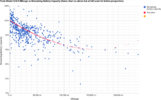I use the car once in few days. When I get home is 40-50% and don't have to drive for few days, maybe one week.
What would be better for battery health, leave it as is, 40%, and charge it to full just before next drive or charge it to full directly when I get home and keep it full for the days I am not driving?
What would be better for battery health, leave it as is, 40%, and charge it to full just before next drive or charge it to full directly when I get home and keep it full for the days I am not driving?




